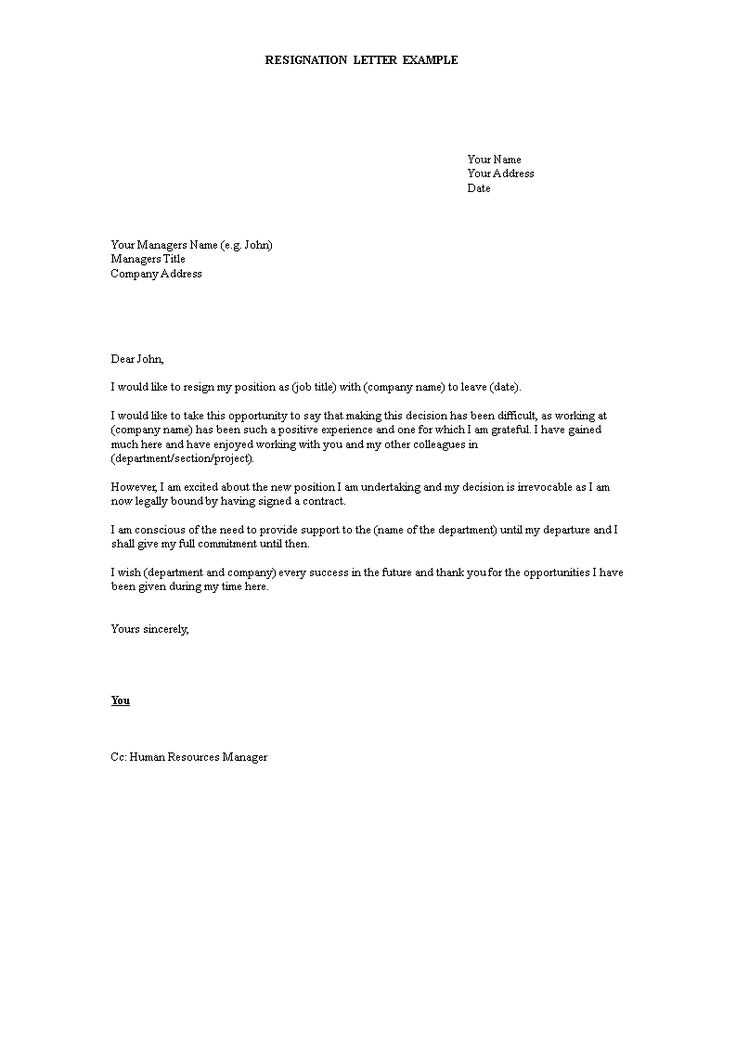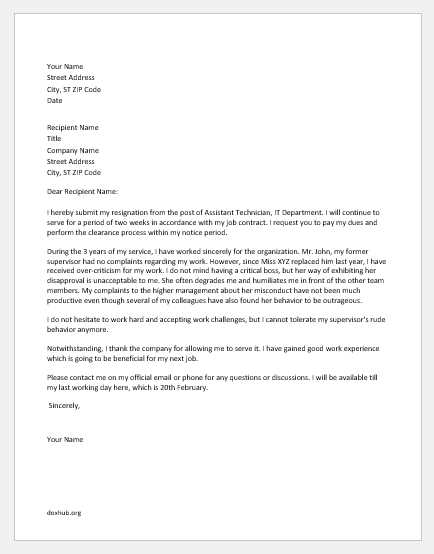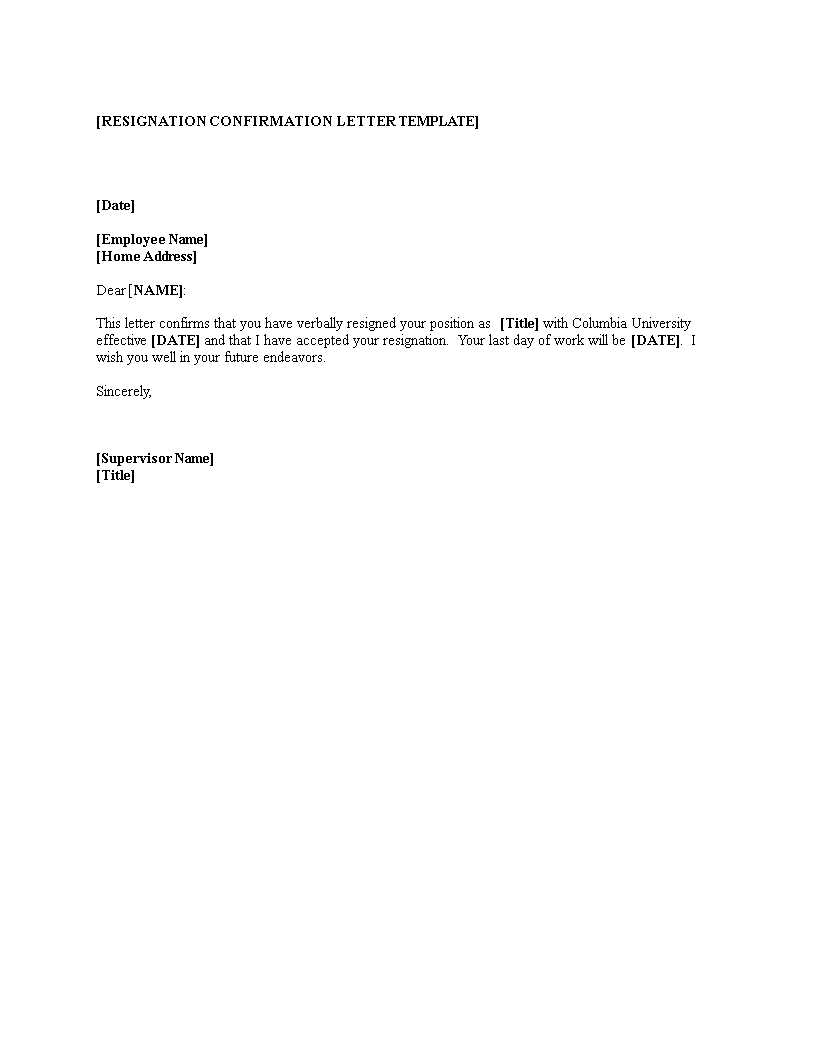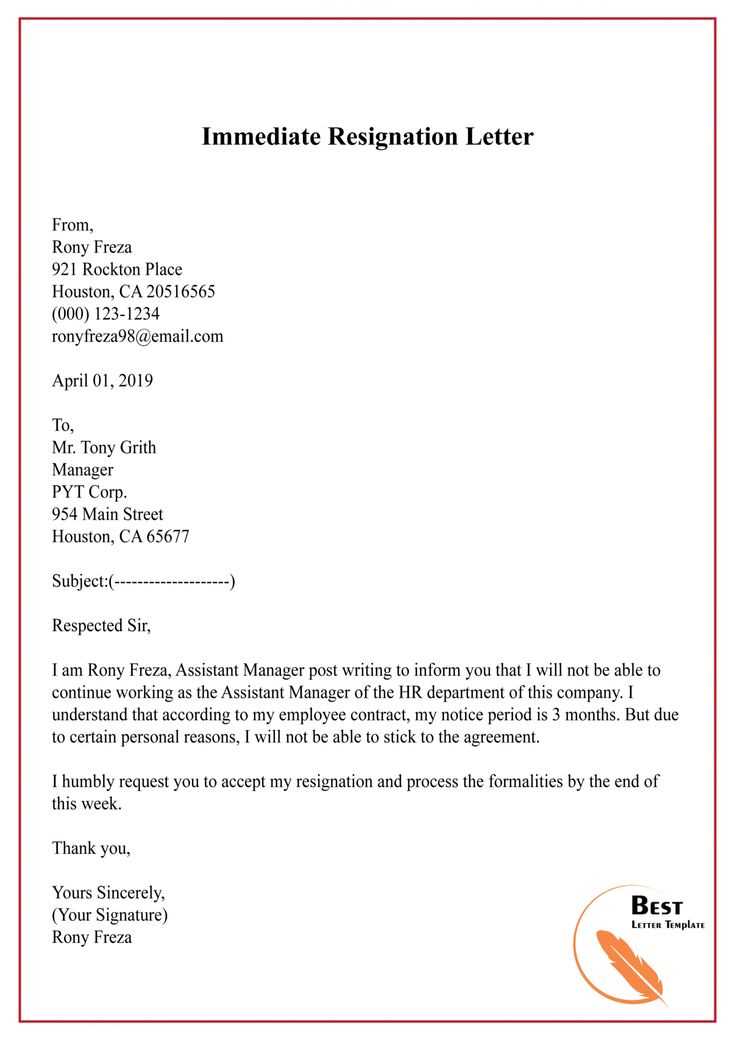Standard Resignation Letter Template for Professionals

When leaving a position, it’s important to communicate your decision clearly and professionally. Crafting a proper document can ensure a smooth transition and leave a positive impression. This type of correspondence serves to formally inform your employer and maintain professionalism during your exit process. Below are key insights into how to create an effective resignation message.
Key Elements to Include

Every effective document for departure should include essential components that reflect respect and clarity. These parts ensure your message is well-received and facilitates an easy transition.
- Introduction: Briefly state your intention to leave and the date of your last day at work.
- Reason (optional): It’s often helpful to provide a reason, but this is entirely up to the individual. Keep it professional and positive.
- Gratitude: Show appreciation for the opportunity and experiences gained during your time at the company.
- Offer to Assist: Mention your willingness to help during the transition phase to ensure a smooth handover of responsibilities.
- Conclusion: End on a positive note, expressing best wishes for the future of the company.
Personalizing Your Message
Each exit communication should reflect your unique situation. Adjust the tone and details according to the nature of your departure. Whether it’s a career change, personal reasons, or any other factor, tailor your document to align with your circumstances while maintaining professionalism.
Maintaining Professionalism
Even if you’re leaving due to negative circumstances, it’s crucial to remain respectful and courteous in your written communication. Keeping a professional tone will help preserve relationships and leave a positive impression for future opportunities.
Avoiding Common Mistakes

It’s easy to make errors when drafting this important document. Here are some common mistakes to avoid:
- Vague language: Be clear and direct in your communication to avoid misunderstandings.
- Negative comments: Focus on the positive aspects of your experience rather than airing grievances.
- Delaying submission: Provide sufficient notice to allow for a proper handover of your duties.
By carefully considering these elements, you can ensure your job departure is handled smoothly, professionally, and with respect for all parties involved.
Document for Job Departure Guide

When deciding to leave a role, it’s essential to communicate your decision in a clear, concise, and professional manner. Properly structured documentation not only reflects your professionalism but also ensures a smooth transition and helps maintain positive relationships with your employer. Below, we’ll explore the key aspects of crafting a thoughtful and effective message for leaving a job.
Why Clear Communication Matters
Clear and direct communication ensures there is no misunderstanding between you and your employer. It helps prevent confusion regarding your departure date, the reasons for leaving, and any future responsibilities. Being transparent with your intentions shows respect for both the company and its processes.
Key Elements to Include in Your Note
To maintain a professional tone, your message should include several key components:
- The decision to leave and your last working day.
- A brief explanation of your reason for leaving (optional, and positive if included).
- Gratitude for the opportunities and experiences gained during your time.
- An offer to assist in the transition, if possible.
- Best wishes for the future success of the company.
Personalizing Your Departure Message
While the structure of the document may be similar for many, it’s important to personalize it to reflect your specific situation. Whether leaving for a new opportunity, personal reasons, or another cause, tailoring the message will ensure that your communication feels sincere and aligned with your circumstances.
Maintaining Professional Tone in Departure
Regardless of the reasons for your departure, it’s important to keep the tone respectful and professional. A positive and courteous message can help preserve relationships and leave a lasting impression. Avoid emotional language or negative comments, as these may affect your professional reputation.
Avoiding Common Writing Errors
Common mistakes can diminish the impact of your message. Here are some to watch out for:
- Being vague about your intentions.
- Including negative remarks about the company or colleagues.
- Failing to provide enough notice for an orderly transition.
Best Approaches for Submitting Your Resignation
Deliver your communication through the most appropriate channel, such as email or formal document, depending on the workplace culture. Ensure you submit it well in advance to give your employer time to plan for your departure. Offering a conversation in person or virtually can also make the process smoother and more personal.